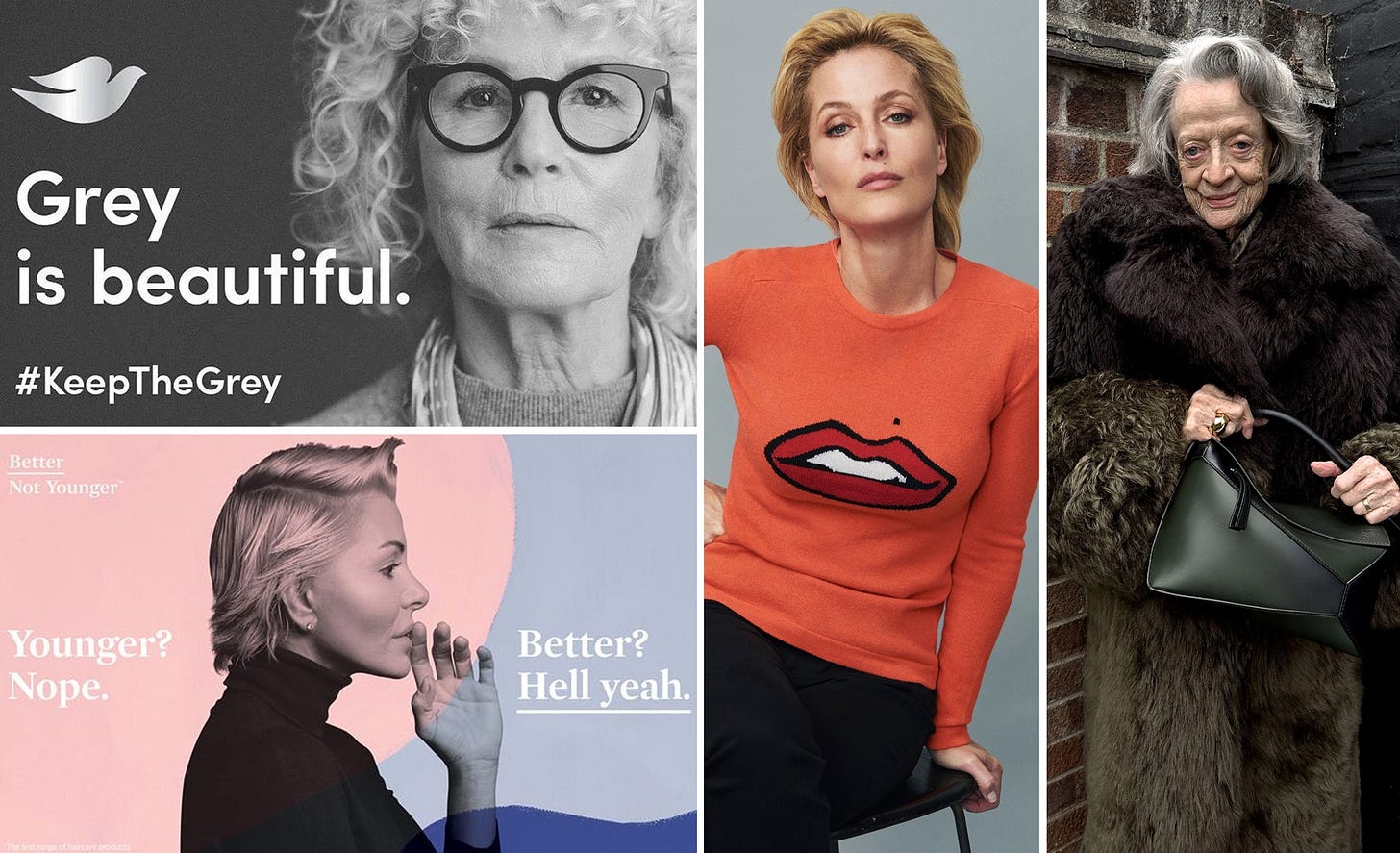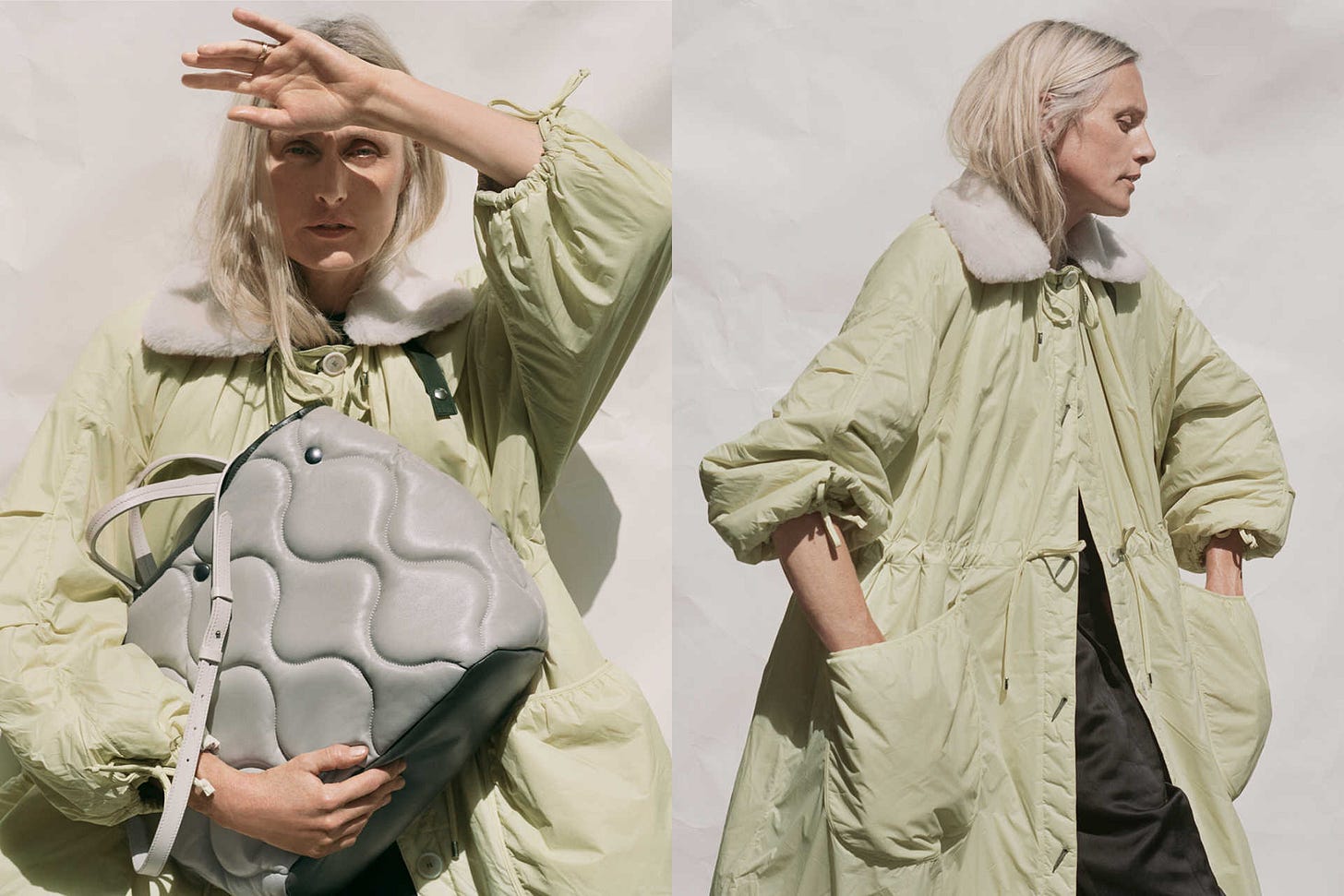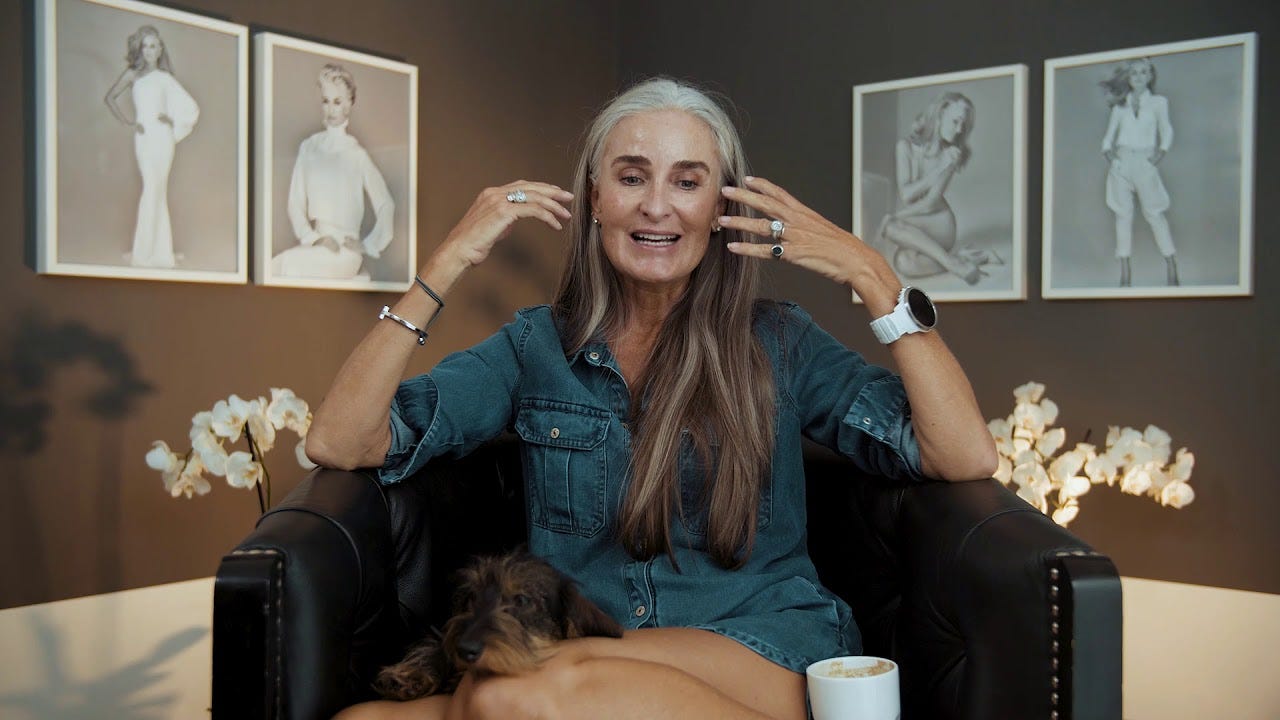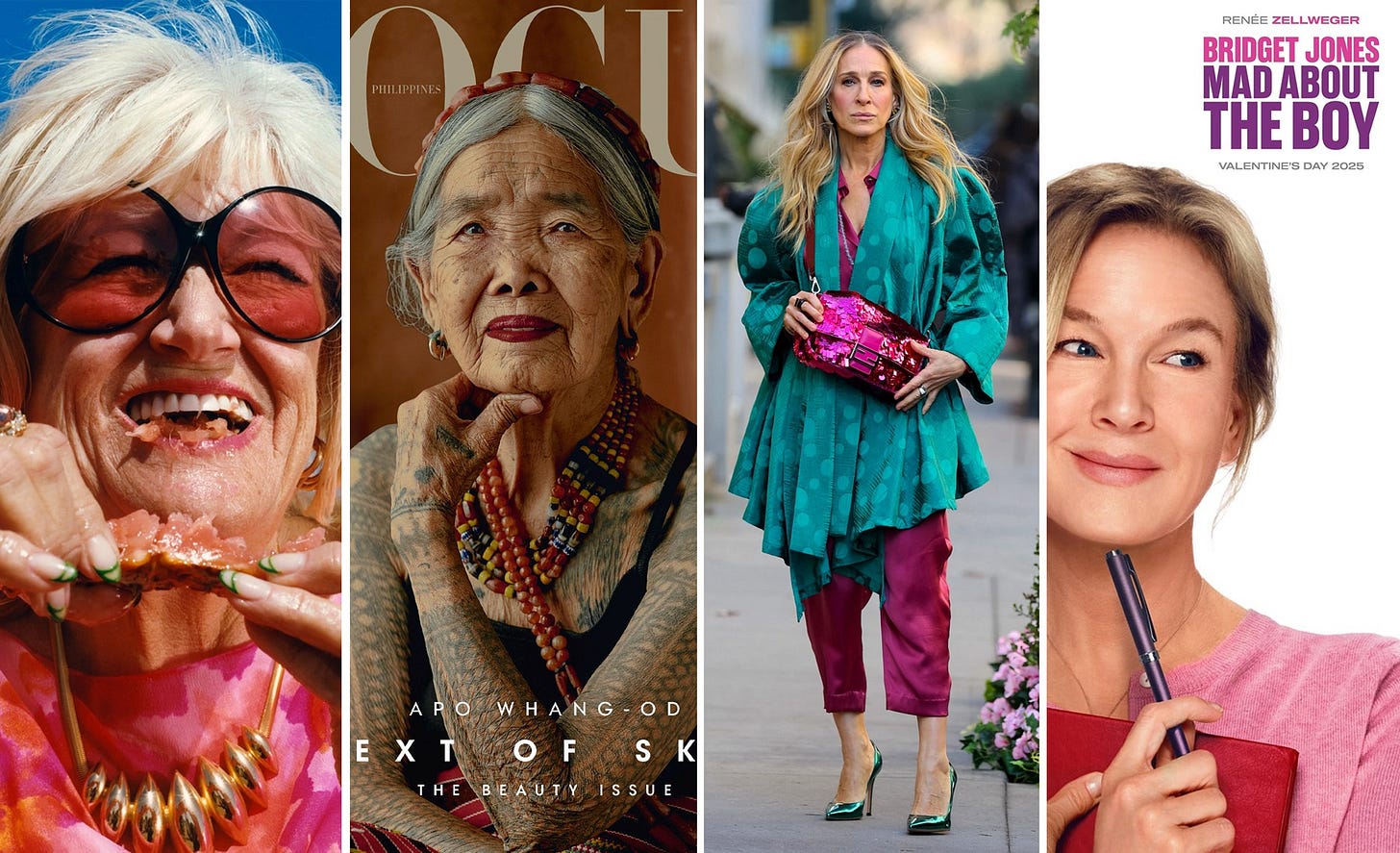When I started co-writing The Womens Room blog back in 2008, our aim was to highlight the gap in the market for intelligent, stylish mid-life woman who didn’t want to become invisible and enter the beige years. Sixteen years later and the fashion industry is still struggling to attract this demographic.
Retailers have tried and failed and tried again to create brands aimed at the older consumer, but often their tone of voice, focus on age over style and inability to understand this new generation, alienates rather than attracts them. The recent Business of Fashion, State of Fashion 2025 report highlights the ongoing opportunities for brands in this market, which got me thinking that everything and nothing has changed since we started The Womens Room.
Here are some thoughts (and stats) that will hopefully inspire retailers to think about this market in new ways, as like everything these days, it isn’t just about the clothes.
THE SILVER OPPORTUNITY
Age is the next frontier in the growing discussion around inclusivity and diversity, with age-based stereotypes still existing and younger people viewing ageing with anxiety and fear.
A new generation of older consumers are rejecting negative cultural views of growing older, to rebrand it with confidence and positivity. Seeing aging as an opportunity rather than a challenge, requires an inclusive mindset and deeper understanding of aging without prejudice. Creating a more age-inclusive future and building a new roadmap for ageing is crucial as an obsession with youth may be costing fashion and beauty brands a slice of the silver economy.
This demographic is growing – and retailers can’t afford to ignore it.
AGING POPULATION
REWIREMENT
Consumers are shifting their priorities and creating new life paths, and “work” is taking on a whole new meaning in life in later decades. Rewired-retirees are reassessing their lives, reinventing themselves and dedicating time to their passions and their families and engaging in new-found purpose. This presents opportunities for hybrid casual/formal clothing, as well as relevant wellness and lifestyle products.
ACTIVE AGING
The contemporary lifestyles of older consumers, offer new product and brand opportunities. People are staying fitter for longer, more connected than ever before through gaming and social media. More and more are starting their own companies later in life and the divorce rate among those ages 65 or older has gone up 46% in a decade.
CHANGING CULTURE
Ageism in the media and popular culture is changing to to reflect more positive views of growing older. Discriminatory and stereotypical views of older people are rejected in favour of relevant, inclusive role models.
MEANING NOT MARKETING
Creating meaningful narratives and imagery around aging are key when creating an aspirational brand for this demographic. Dropping negative terminology and adopting positive marketing strategies that support the wants and needs of older consumers, taps into their desire for authenticity and breaks down harmful stereotypes.

SILVER SPENDERS
Older people increased their spending on clothes and shoes by 21% – or £2.9bn – between 2011 and 2018, according to analysis. And by 2040, people aged 50 and over are expected to be this sector’s key consumer base. Gen X and boomers are adopting a more age-agnostic mindset for their fashion and beauty choices.
Rather than be defined by their age, Boomers want to feel included and represented and a JWT Intelligence study, found that “91% of women aged 53-72 “wish advertisers would treat them like people and not stereotypes”.
Having a contemporary attitude to aging is the key to bridging the generational divide and creating ageless style.
“Fashion brands have typically focused on youth, but in 2025 they may struggle to grow sales from younger shoppers alone. The “Silver Generation”aged over 50 represents agrowing population with a high share of global spend. Brands that engage these previously overlooked shoppers while creating inter-generational appeal will unlock incremental growth”.
BOF State of Fashion 2025
RELATABLE STYLE
Working with inspirational, relatable influencers and experts, builds connectivity and engagement for this new breed of style conscious consumers. Authentic style is what matters to us.
Some brands that are doing good things. In the UK M&S are leading the way with accessible style, great quality and age inclusive campaigns. Me & Emhave an ageless approach to fashion. In the US
J Crew and Eileen Fisher target middle-aged consumers, and French brands such as Sézane and Seour understand that women have style over 50.
But there is still a long way to go and there is no doubt that this demographic remains a huge opportunity. By adopting a new mindset and innovative thinking brave retailers could reap huge rewards and help change societies mindset about aging.
As lots of us have come to realise, getting older really isn’t the worst thing in the world.











I live by the old mantra, you are as old as you feel. Some days I do feel my age (78 at the last count) and can't always manage to do all the things I want to do but getting older also means you embrace the fact that there's always tomorrow and if you want to sit and read a book that ironing pile will still be there in the morning ....... I still dye my hair bright red, still shop on the high street, love mixing pattern and colour in a way that makes me feel the same as I did when I was a flibberty-jibbert 50year old.
I cant believe you are 78, but I am 63 at Christmas so I suppose I should. I totally agree Sue, I feel like life can be as slow or as fast as you want it to be, as the great thing about growing older is that you care less what people think. Also agree on dressing totally for yourself, again I dont care what anyone else thinks, I dress for me.